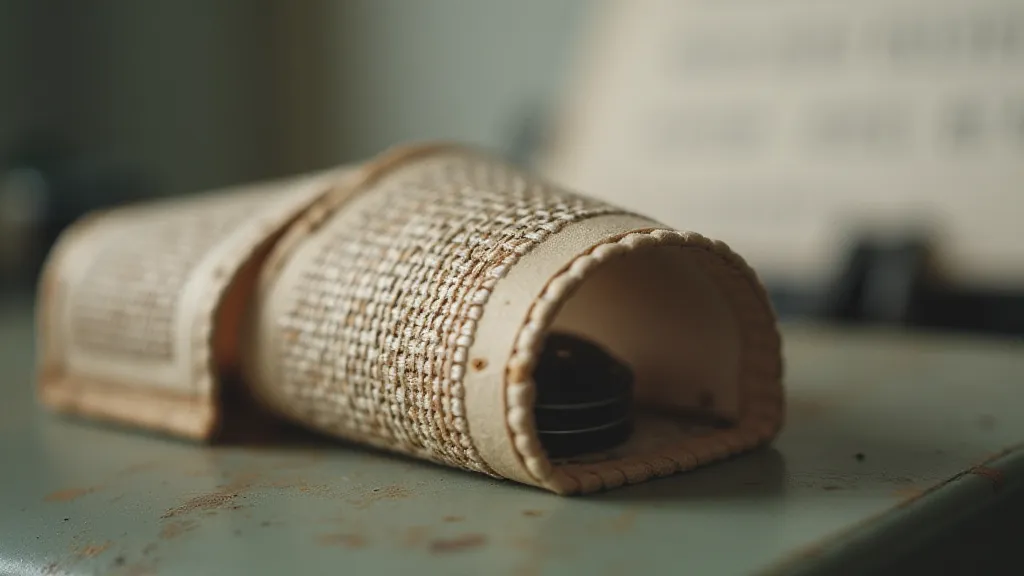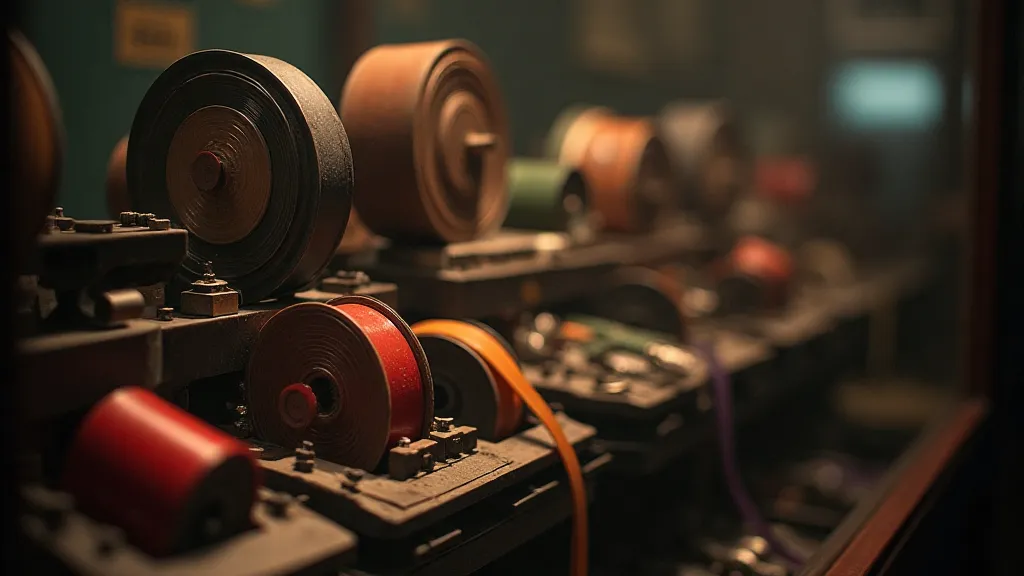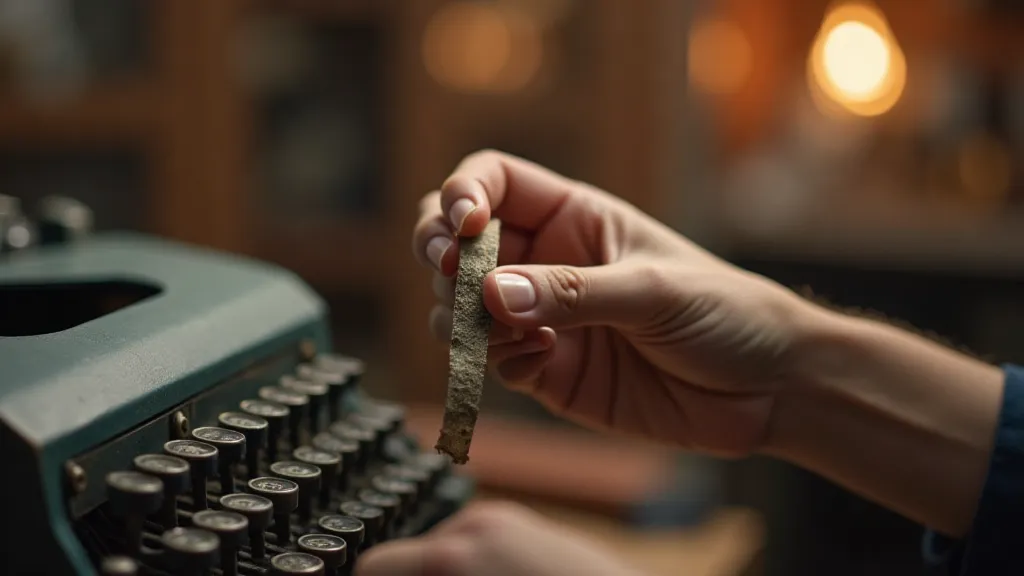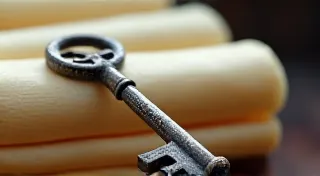The Unwritten Dialogue: Ribbon Design as a Reflection of User Intent
The quiet clatter of a typewriter. The scent of aged ink. It’s a sensory experience that transports us to a different era, a time when communication wasn’t instantaneous, and every word felt weighted with intentionality. We often focus on the machines themselves – the Underwood, the Remington, the Olivetti – marveling at their mechanical ingenuity. But what about the ribbon? The humble strip of fabric that allowed these machines to speak? It’s easy to overlook, to see it merely as a consumable part. Yet, the choice of ribbon – its color, its weave, even its perceived quality – speaks volumes about the user's intent, creating an “unwritten dialogue” between the writer and the audience.
My fascination with antique typewriter ribbons began not with a desire to collect, but with a frustration. I was restoring a 1920s Smith Corona, a machine that had clearly seen a life of dedicated service. Finding a replacement ribbon seemed a simple enough task, but the available options were… generic. Uniformly black. It felt wrong, somehow, to insert such a modern, impersonal component into a machine so imbued with character. That's when I began researching, discovering the vibrant history woven (literally!) into these unassuming strips.
The Early Days: Black and Beyond
In the earliest days of typewriting, ribbons were almost exclusively black. This was the color of formality, of business correspondence, legal documents, and the serious pronouncements of the era. Manufacturers like IBM and Remington emphasized durability and consistent ink transfer, often using a tightly woven cotton fabric. These early ribbons were robust, built to withstand the heavy use demanded by offices and journalists. Imagine the countless letters drafted, the news stories filed, all imprinted on the page with that unwavering black ink. Each ribbon a silent witness to significant moments in history.

The Rise of Color: Expressing Tone and Purpose
As typewriters became more accessible to individuals and creative professionals, the demand for color ribbons began to grow. The early 20th century saw the introduction of brown ribbons, often used for literary correspondence or more personal letters, lending a warmer, more intimate feel. Red ribbons were rare, sometimes utilized for proofreading marks or highlighting crucial passages – a stark visual cue indicating urgency or importance. Then came the explosion of color in the 1950s and 60s, mirroring the broader cultural shifts of the era. Purple ribbons signified creativity and flair. Green hinted at nature and tranquility. Blue conveyed professionalism and trustworthiness.
Consider a novelist crafting a romance in the 1930s. Would they choose a standard black ribbon? Perhaps, for a sense of authenticity and historical accuracy. But a touch of soft brown might evoke a sense of nostalgia, a wistful echo of a bygone era. A playwright drafting a comedic piece might opt for a playful shade of purple, reflecting the lighthearted nature of their work. The ribbon wasn't just transferring ink; it was shaping the perception of the text, influencing the reader's emotional response.
Ribbon Materials: Beyond Cotton
The materials used in typewriter ribbons also played a crucial role in their quality and longevity. Early ribbons were almost exclusively made from cotton, prized for its strength and absorbency. Later, manufacturers experimented with silk, offering a smoother writing experience and more vibrant color saturation. Silk ribbons were considered a luxury, often favored by authors and artists who valued aesthetic refinement. Nylon ribbons appeared in the mid-20th century, offering increased durability and resistance to fading. Each material contributed to a unique feel and performance characteristic, subtly affecting the overall writing experience.
Restoring an antique typewriter isn't just about cleaning the mechanics; it's about understanding the original context, the intended use. A period-correct ribbon can elevate the restoration, adding an extra layer of authenticity. Imagine finding a faded purple ribbon tucked away in the workings of a 1930s Underwood – a silent clue about the writer who once used it. It’s a small detail, but it adds immeasurably to the machine's story.
Collecting antique typewriter ribbons is a rewarding pursuit. Beyond the aesthetic appeal, it’s a way of connecting with the past, of piecing together fragments of forgotten lives. Finding a rare shade of turquoise or a silk ribbon with a unique pattern feels like unearthing a tiny treasure.

The Art of Restoration: Matching the Era
When restoring a typewriter, the choice of ribbon is a crucial element. Modern, generic black ribbons often feel out of place, detracting from the machine’s character. Researching the typewriter’s era and intended use can help determine the most appropriate ribbon type. For example, a 1920s Underwood might benefit from a brown cotton ribbon, while a 1950s Royal might look stunning with a vibrant purple nylon ribbon. It's about recreating an authentic experience, transporting the user back to the machine’s heyday.
The ongoing search for authentic ribbons also contributes to their preservation. Replicas are emerging, offering closer matches to original specifications. While these modern interpretations aren’s the real thing, they’re a step towards ensuring that these vital pieces of typewriter history continue to be used and appreciated.
The humble typewriter ribbon, so often overlooked, is more than just a consumable part. It's a silent witness to history, a reflection of user intent, and a testament to the enduring appeal of analog technology. Next time you encounter an antique typewriter, take a moment to consider the ribbon. Listen to the unwritten dialogue it has to offer. It might just reveal a story you never knew existed.






